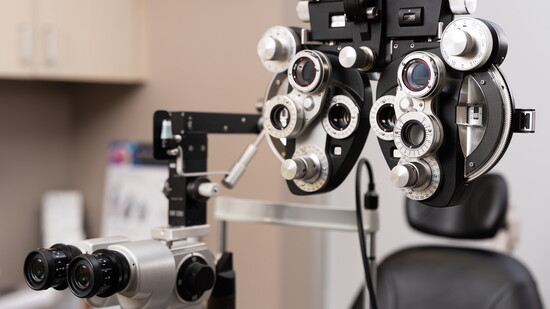Since opening its doors in Chaska in August 2005, Southwest Eye Care (SWEC) has grown from a single-location practice into a comprehensive eye care network serving the southwestern Twin Cities region. Founded by Dr. Amy Freed, Dr. Chris Freed, and Dr. Chad Dockter, the practice began with a shared vision of providing personalized eye care to patients of all ages.
The eye care center quickly expanded, adding locations in Glencoe and Norwood Young America in 2007, followed by a Minnetonka clinic in 2012. A significant milestone came in 2014 with the merger of Crow River Eye Care and the addition of Dr. Scott Glaser as the fourth partner, bringing services to Hutchinson. Growth continued into Belle Plaine, Watertown, and Mound, with long-standing local practices and experienced staff joining the team.
In 2017, Dr. Jabin Krassin joined the practice as a partner, introducing ophthalmology services and enabling SWEC to offer a full spectrum of care—including cataract and LASIK surgery, glaucoma management, cosmetic procedures, and advanced medical treatments. Today, SWEC remains rooted in its founding values of community, innovation, and individualized care, proudly serving patients across a growing network of clinics.
Comprehensive Care
The original goal behind SWEC was simple but ambitious: to create a patient-centered clinic in the very neighborhoods where the founders were raising their families. The model worked—by combining clinical excellence with a warm, community-driven atmosphere, the practice quickly grew. Today, SWEC stands out not just for its scale but for its integrated care model. The addition of Dr. Krassin, a board-certified ophthalmologist and the clinic’s sole surgeon, added an essential layer of medical expertise that bridges optometry and ophthalmology in a seamless patient experience.
“Our mission was to provide everything for our patients from a routine exam and purchasing quality products to getting LASIK procedures right in our office or cataract surgery, all within our system,” says Dr. Amy Freed.
This cohesion allows SWEC to deliver a comprehensive continuum of care. Patients can start with an annual eye exam, receive state-of-the-art diagnostics, and—if needed—transition to in-house medical or surgical treatment for complex conditions like glaucoma, cataracts, and macular degeneration. Dr. Krassin, who is also the chair of SWEC’s Research Department, oversees advanced procedures and contributes to ongoing FDA studies, ensuring the clinic remains at the forefront of medical innovation.
Exploring the Latest Trends in Eye Care
As eye care evolves, so do patient expectations. Today’s patients want quicker results, more transparency, and digital convenience. In response, SWEC has embraced telehealth and integrated artificial intelligence (AI) tools to enhance patient education and administrative efficiency.
Technology is also revolutionizing treatment. In the realm of glaucoma care, minimally invasive glaucoma surgeries (MIGS) and long-acting drug implants now offer alternatives to daily eye drops. For early-stage keratoconus, cross-linking procedures can now halt disease progression without the need for corneal transplants. And for patients over 40 seeking visual freedom, Clear Lens Exchange—a procedure that places premium lens implants to correct nearsightedness and or farsightedness—is becoming increasingly popular.
“People used to accept reading glasses and cheaters would come with age for everyone,” Dr. Krassin explains. “Now, we’re seeing a shift toward proactive vision correction that restores near and distance vision—often eliminating the need for glasses altogether.”
On the optometric side, SWEC is addressing the rise in digital eye strain, dry eye, and myopia, particularly in younger patients. The team incorporates anti-fatigue lenses with blue light filters and anti-glare coatings for computer use to manage screen-related strain and slow myopia progression. Annual eye exams remain the cornerstone of preventative care, enabling early detection of silent threats like glaucoma.
New tools like SightSync and neurolens also allow optometrists to better evaluate symptoms such as headaches or eye misalignment—conditions that are often overlooked but can be life-changing when properly addressed.
What’s next for SWEC? Continued expansion of its integrated model, deeper investments in AI and imaging technology, and a continued commitment to patient education and comfort.
In an industry where many providers are scaling back on face-to-face time, Southwest Eye Care continues to push forward with a model that blends high-tech precision with high-touch care—a vision that’s clearly focused on the future.
